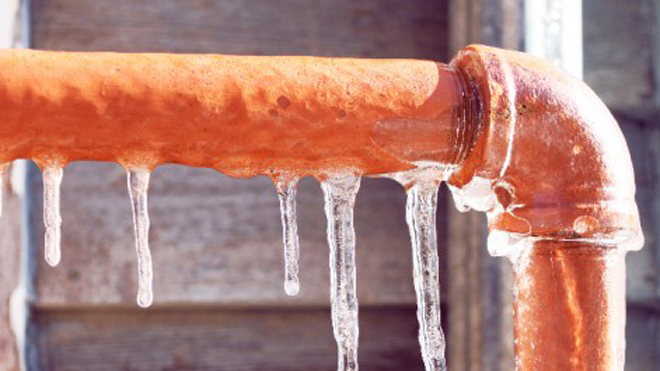What're your thoughts on How to Prevent Your Pipes From Freezing?

Cold weather can wreak havoc on your pipes, specifically by freezing pipes. Here's how to stop it from taking place and what to do if it does.
Introduction
As temperatures decline, the danger of frozen pipelines boosts, possibly bring about expensive repairs and water damages. Understanding just how to avoid icy pipes is critical for house owners in cold climates.
Avoidance Tips
Insulating at risk pipes
Wrap pipelines in insulation sleeves or use warm tape to shield them from freezing temperatures. Focus on pipelines in unheated or external areas of the home.
Home heating methods
Keep indoor spaces adequately heated up, especially areas with pipes. Open closet doors to permit warm air to circulate around pipelines under sinks.
Just how to determine icy pipes
Look for decreased water circulation from faucets, uncommon smells or noises from pipes, and noticeable frost on revealed pipelines.
Long-Term Solutions
Structural modifications
Take into consideration rerouting pipelines far from outside walls or unheated areas. Add extra insulation to attics, basements, and crawl spaces.
Upgrading insulation
Invest in premium insulation for pipes, attics, and walls. Proper insulation helps keep regular temperature levels and lowers the danger of frozen pipes.
Protecting Exterior Pipes
Garden hoses and exterior faucets
Disconnect and drain pipes garden hoses prior to wintertime. Set up frost-proof spigots or cover outside faucets with shielded caps.
Understanding Frozen Pipelines
What triggers pipes to ice up?
Pipelines freeze when exposed to temperature levels listed below 32 ° F (0 ° C) for extended durations. As water inside the pipelines freezes, it increases, putting pressure on the pipe wall surfaces and potentially creating them to rupture.
Threats and damages
Frozen pipelines can result in supply of water disturbances, property damages, and pricey repair work. Burst pipelines can flood homes and create comprehensive architectural damages.
Indications of Frozen Piping
Recognizing icy pipelines early can avoid them from rupturing.
What to Do If Your Pipes Freeze
Immediate actions to take
If you think frozen pipelines, maintain faucets available to alleviate pressure as the ice thaws. Make use of a hairdryer or towels soaked in hot water to thaw pipelines slowly.
Conclusion
Preventing icy pipes calls for positive steps and fast actions. By understanding the reasons, indicators, and safety nets, property owners can shield their plumbing during winter.
5 Ways to Prevent Frozen Pipes
Drain Outdoor Faucets and Disconnect Hoses
First, close the shut-off valve that controls the flow of water in the pipe to your outdoor faucet. Then, head outside to disconnect and drain your hose and open the outdoor faucet to allow the water to completely drain out of the line. Turn off the faucet when done. Finally, head back to the shut-off valve and drain the remaining water inside the pipe into a bucket or container. Additionally, if you have a home irrigation system, you should consider hiring an expert to clear the system of water each year.
Insulate Pipes
One of the best and most cost-effective methods for preventing frozen water pipes is to wrap your pipes with insulation. This is especially important for areas in your home that aren’t exposed to heat, such as an attic. We suggest using foam sleeves, which can typically be found at your local hardware store.
Keep Heat Running at 65
Your pipes are located inside your walls, and the temperature there is much colder than the rest of the house. To prevent your pipes from freezing, The Insurance Information Institute suggests that you keep your home heated to at least 65 degrees, even when traveling. You may want to invest in smart devices that can keep an eye on the temperature in your home while you’re away.
Leave Water Dripping
Moving water — even a small trickle — can prevent ice from forming inside your pipes. When freezing temps are imminent, start a drip of water from all faucets that serve exposed pipes. Leaving a few faucets running will also help relieve pressure inside the pipes and help prevent a rupture if the water inside freezes.
Open Cupboard Doors
Warm your kitchen and bathroom pipes by opening cupboards and vanities. You should also leave your interior doors ajar to help warm air circulate evenly throughout your home.

I came across that piece of writing on Preventing and dealing with frozen pipes while surfing around the search engines. Sharing is caring. Helping others is fun. Thank you for your time. Revisit us soon.
Visit Our Website